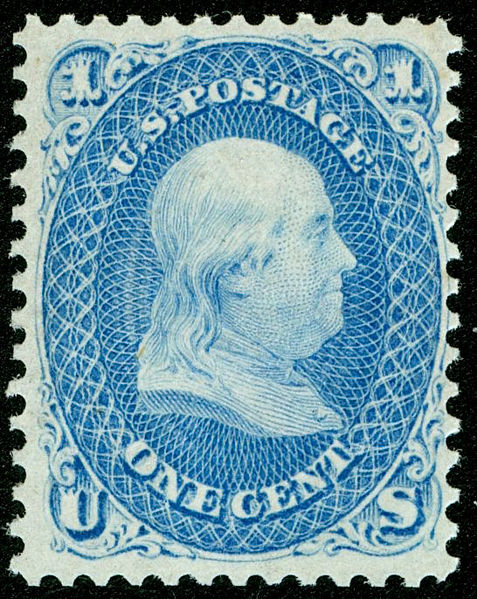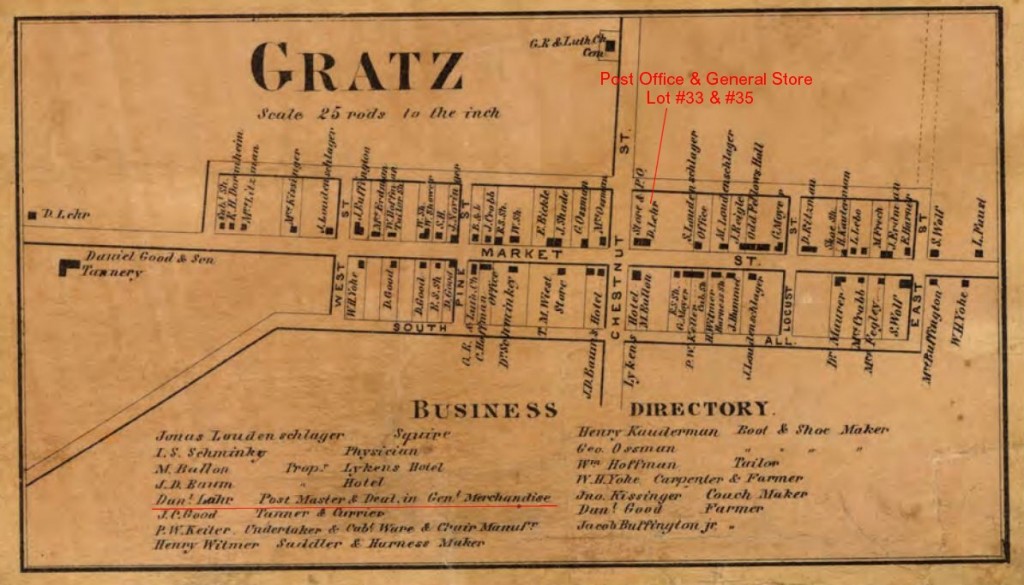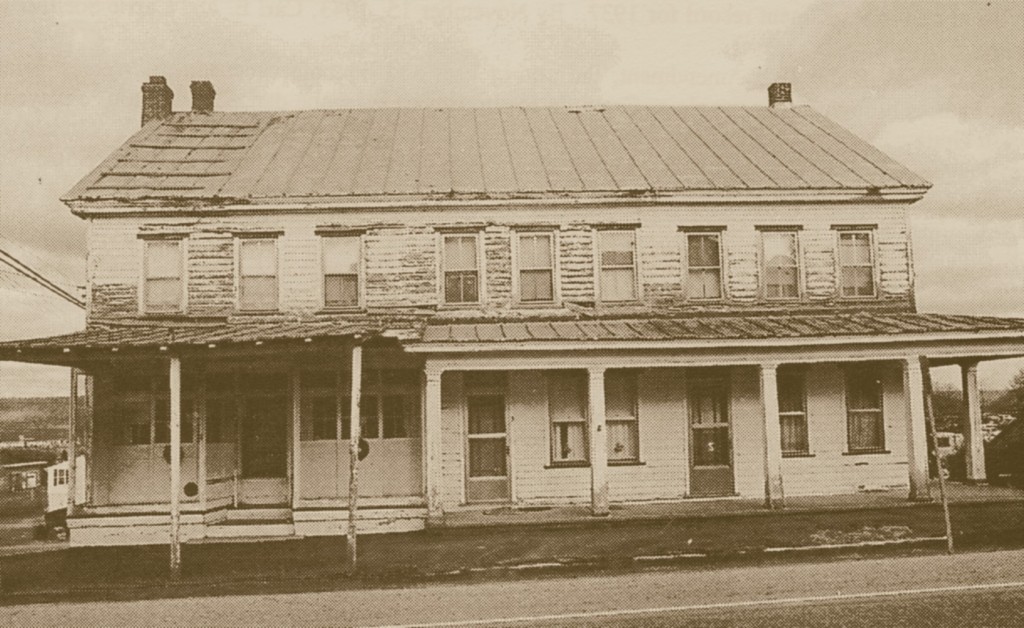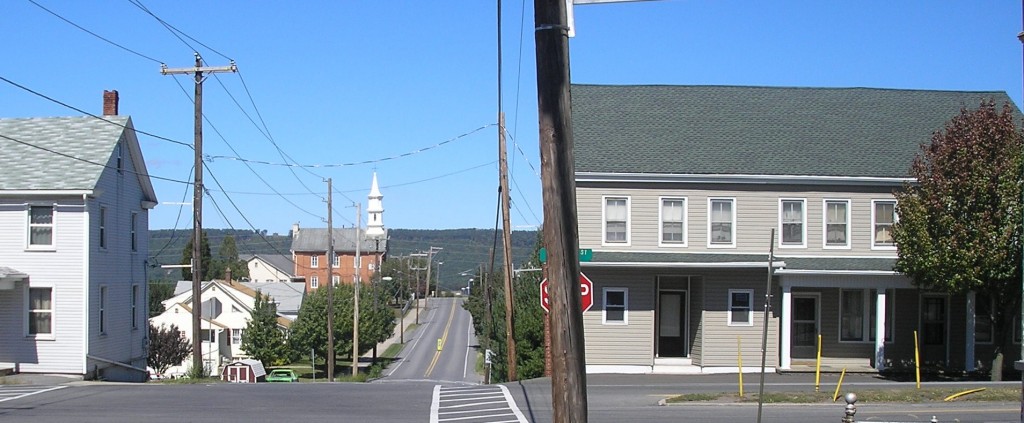Gratz During the Civil War – Post Office
Posted By Norman Gasbarro on June 25, 2011
The Postmaster of Gratz during the Civil War years of 1861-1865 was Daniel Lehr and the post pffice was located on the northeast corner of Market Square (Market & Center Streets) in Lehr’s General Store. The 1862 map shows the location and Lehr is listed in the “Business Directory” as the “Postmaster.” During the Civil War as in other crucial times of the 19th Century, the post office was the central point of all communication in from the rest of the world and out to the rest of the world. The Civil War postmaster handled all letters to and from soldiers as well as newspapers. The Post Office and General Store were located on Lot #33 (corner) and Lot #35 (first lot east of the corner) which had been joined together for many years going back to the Simon Gratz subdivision.
The oldest building on this property was built on the corner lot (#33) around 1820. In 1852, Daniel Lehr built a substantial addition to the property which extended the building along Market Street into Lot #35. Later he built a barn. Today, the footprint of the Civil War era building remains essentially unchanged.
For a map of Gratz with the Simon Gratz subdivision lot numbers, click here.
Daniel Lehr was born near Wayne Township, Schuylkill County, Pennsylvania, in 1810. Daniel Lehr’s father died when he was about nine and a John Lock became his guardian. How he arrived in Gratz is unknown, but in 1834, he was single and living with a man named Adonjah Mathias who died that same year. Mathias left his estate to Daniel Lehr, “for taking care of him when he was sick.” After he received his inheritance, Daniel married Sarah Yeager of Orwigsburg. He was about 23 and she was about 32. They had three sons, two of whom were still living at home at the beginning of the Civil War. Henry Lehr was born in 1838, George Lehr was born in 1842, and Daniel Lehr was born in 1849.
The 1840 tax records indicate that Daniel Lehr was the owner of Lots #33 & #35. At first he was a “Saddler” but by 1843, he had gone into the general merchandise business at this site. It is not known why he chose to change occupations, but by 1844 he received his first appointment as postmaster, a post he only held for about fifteen months. It was customary at the time for the post office to be located in the business establishment of the postmaster so, the post office probably moved to this corner in 1844. The previous postmaster was Conrad Fry, who held the post for less than a year before moving to Union County, Pennsylvania. Fry’s family was in the inn and tavern business and it is assumed that the previous post office was located there. In 1847, Jacob Buffington took over as postmaster. Jacob had a store on Lot #1 and was an innkeeper as well, but all evidence indicates that the post office remained in the store on Lot #33. Then in 1849, Daniel Lehr was re-appointed Postmaster of Gratz and this time held the position continuously for seventeen years. Cyrene T. Bowman, a Civil War veteran, succeeded Daniel Lehr as Postmaster of Gratz in 1866. Daniel Lehr sold his business and property in 1867 to Jacob Wiest of Klingerstown. In 1867, on one of Daniel’s last purchasing trips to Harrisburg before he was sold the store, he was robbed of $125. Perhaps that convinced him that it was time to retire. Despite a succession of postmasters through the end of the nineteenth century, only some of whom were involved in a mercantile business at Lots #33 and #35, the post office remained there.
Daniel Lehr died in 1868 and is buried in Gratz Union Cemetery.
Capt. Benjamin Evitts, another Civil War veteran, held the position of Postmaster of Gratz from 1893 to 1897. At the time, Evitts lived in Lykens Township, but traveled to Gratz for his duties at the post office, which was in the store on Lot #33. When Cyrene T. Bowman returned as postmaster in 1897, he created quite a stir when he moved the post office away from its “traditional” location to the “upper end of Gratz.” Residents complained of the distance to travel to an end of town without street lamps. So, in 1899, Bowman moved the post office back to the center of Gratz, this time to Lot #40 where he also moved his store.
Thus, the location of the Gratz Post Office was the “traditional” location of nearly 20 years when the Civil War broke out. And, Gratz had the stability of having one postmaster during the war.
Many changes had taken place in the post office system in those years. In 1847, the first national postage stamps were issued. Prior to the issuance of the first stamps, “stampless covers” were used with “paid” markings applied by the postmaster. By 1861, it was taken for granted that a stamp indicated pre-paid transit for the mails. Elaborately engraved stamps were provided by the government and were perforated to make their separation easier. When a letter was presented to the postmaster, a stamp was affixed and canceled with the name of the post office noted within a circular date stamp. The cancel prevented the stamp from being re-used. More importantly though, the circular date stamp established a community identity that was recognized in Washington.
After the attack on Fort Sumter, the Confederate Government, wanting to establish its own postal system and national identity, ordered the return of all U.S. stamps to Washington. Despite this order, the Post Office Department feared that the stock of stamps then available in post offices would become contraband, so it was decided that new stamps would be issued which would be distinctly different in design. The old stamps would be invalidated. One of the new stamps which was made available in the Gratz Post Office in August of 1861 is shown below.
 The Arabic numerals and the designation “U.S.” distinguished the new designs from their predecessors. Some postmasters, despite orders not to accept or use the old stamps, used them anyway. Letters bearing these old stamps are rare and it is not known if any slipped through the Gratz Post Office during the war years.
The Arabic numerals and the designation “U.S.” distinguished the new designs from their predecessors. Some postmasters, despite orders not to accept or use the old stamps, used them anyway. Letters bearing these old stamps are rare and it is not known if any slipped through the Gratz Post Office during the war years.
Nearly two billion of the new stamps were printed and most of these ended up getting used on letters. Relatively few of the letters survive. The study of the history of individual post offices and the cancels and postmarks used is referred to as “postal history.” Collectors of postal history accumulate selected “covers” (envelopes which have passed through the mails) that tell the story of an individual post office or a postal route. It is not known is there are any specialists in the postal history of Gratz but it would be interesting to see Civil War era covers bearing the “Gratz” postal designation. The Pennsylvania Postal History Society has a web site and occasionally members display items from their collections, none currently from Civil War Gratz. The Gratz Historical Society has many “Gratz” postmarks in its collection of materials, but none from the Civil War era. Any cover found from the Civil War period was surely postmarked by Daniel Lehr!
Henry Lehr, oldest son of Daniel Lehr, was married to Sarah Lebo at the time of the Civil War Draft in 1863 and was living in Lykens Township. Although there are several entries in the Steve Maczuga Database and in the Pennsylvania Veterans’ Card File for “Henry Lehr” who served in Civil War regiments, none of these has been specifically connected to Henry R. Lehr, the son of the Gratz postmaster. No veterans list produced for Gratz or the surrounding area has ever included his name. It has to be assumed that he did not serve. Henry had three young children around the time of the war. His oldest was Monroe Daniel Lehr who was born in 1860. Joseph Lehr was born in 1862. Abraham Lincoln Lehr was born in 1865, just after the Lincoln assassination. No doubt these grandchildren of Daniel Lehr were frequent visitors to the Post Office and General Store operated by their grandfather.
George Lehr is listed in the 1860 Census as working as a teacher in a common school. He was living with his parents in 1860. In 1863, for his draft registration he was 21, single, and claimed he was a doctor. No other reference to him as a doctor has been found nor has any connection with Civil War service. There are however several persons with the name “George Lehr” who served in Pennsylvania regiments.
The youngest son Daniel L. Lehr was only 11 at the time of the 1860 Census and probably was a student when he was not helping his father in the store.
The medical connections for this property are interesting. William Lebo, brother of Sarah [Yeager] Lehr, was a member of the Daniel Lehr household when he was a student of medicine. William Lebo, the brother-in-law of Henry Lehr, continued his medical studies and practiced for many years in the Valley View area of Schuylkill County. Henry’s son Monroe Lehr studied medicine with his uncle and later became a prominent physician in Lykens, Dauphin County, Pennsylvania. Then there is the claim of George Lehr that he was a doctor at the time of the Civil War draft. Perhaps he had a change of heart. The Census of 1900 lists him as a Farm Hand.
The only one of the above for whom Civil War service is possible is William Lebo. A record shows that there was a William Lebo who served in the 16th Pennsylvania Cavalry. Another record shows a William B. Lebo who served in the 10th Pennsylvania Infantry. More information is needed to confirm which of these is the correct regiment.
The Civil War Research Project is seeking early pictures of the buildings on Lot #33 and Lot #35, particularly if any exist with signs indicating that the post office was located there. Also, any Civil War era covers with the Gratz postal designation would be significant donations to the collection! The photo above is from A Comprehensive History of the Town of Gratz Pennsylvania, p. 275. Some of the information for this post was also taken from the same book. The date of the photo is unknown but presumably it is from the 20th century. The photo below was taken recently and shows modern renovations intended to convert the corner store into a residence.
Finally, the picture of the 1861 postage stamp is from Wikipedia.
This is the third post in a series of articles on Gratz during the Civil War. Future posts will attempt to document all the remaining Civil War era buildings in the Borough.
 ;
;






Comments